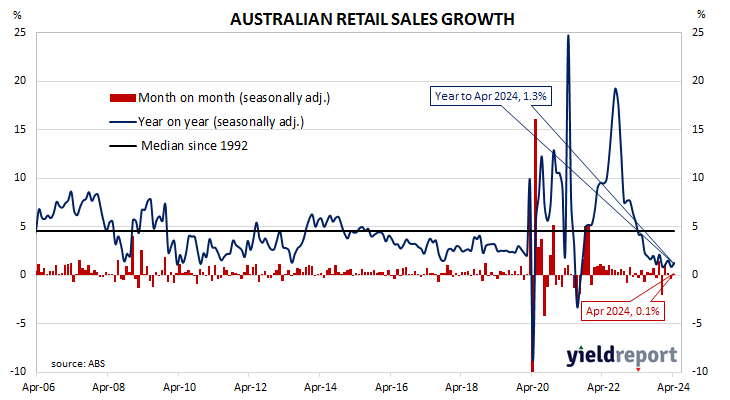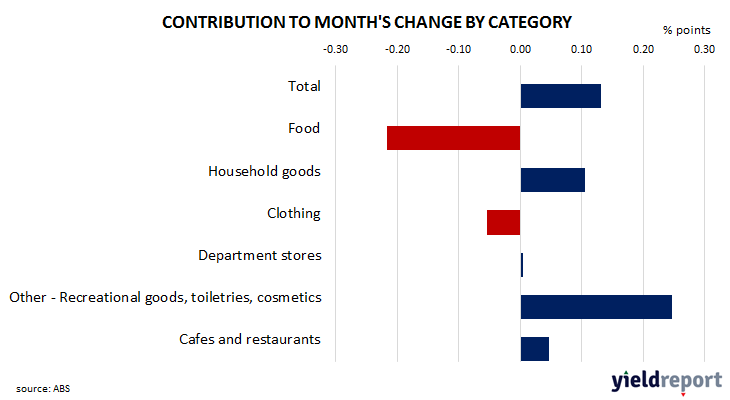Summary: Retail sales up 0.1% in April, slightly less than expected; up 1.3% on 12-month basis; ANZ: sales little changed over past 3 months; ACGB yields decline; rate-cut expectations soften; Westpac: sales flatlining in nominal terms, implies continued declines in inflation-adjusted sales; largest influence on result from “other” category, food sales.
Growth figures of domestic retail sales spent most of the 2010s at levels below the post-1992 average. While economic conditions had been generally favourable, wage growth and inflation rates were low. Expenditures on goods then jumped in the early stages of 2020 as government restrictions severely altered households’ spending habits. Households mostly reverted to their usual patterns as restrictions eased in the latter part of 2020 and throughout 2021.
According to the latest ABS figures, total retail sales rose by just 0.1% on a seasonally adjusted basis in April. The rise was slightly less than the 0.2% increase which had been generally expected but in contrast with March’s 0.4% fall. Sales increased by 1.3% on an annual basis, up from 0.9% after revisions.
“This follows a decline of 0.4% in March and an increase of 0.2% in February, leaving retail sales little changed over the past three months,” said ANZ senior economist Blair Chapman.
Commonwealth Government bond yields declined across the curve on the day. By the close of business, the 3-year ACGB yield had slipped 1bp to 3.95%, the 10-year yield had lost 2bps to 4.27% while the 20-year yield finished 3bps lower at 4.58%.
In the cash futures market, expectations regarding rate cuts in the next twelve months softened. At the end of the day, contracts implied the cash rate would remain close to the current rate for the next few months and average 4.32% through June and 4.34% in August. November contracts implied 4.305%, February 2025 contracts implied 4.245% while May 2025 contracts implied 4.13%, 19bps less than the current cash rate.
“Retail sales are flatlining in nominal terms, implying continued declines in real, inflation adjusted sales and material falls in per-capita terms,” said Westpac senior economist Matthew Hassan. “The July tax cuts look set to be the most promising timing for any eventual lift, although even here prospects look fairly muted.”
Retail sales are typically segmented into six categories (see below), with the “Food” segment accounting for 40% of total sales. However, the largest influences on the month’s total came from the “Other” segment where sales rose by 1.6%. “Food” sales had nearly as large an effect, albeit in the opposite direction, after sales fell by 0.5%.



